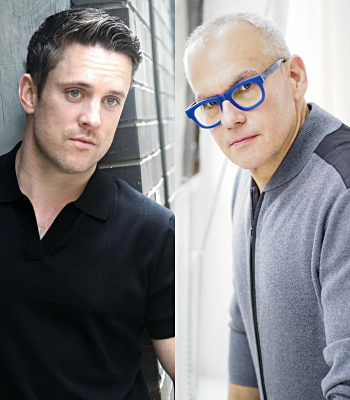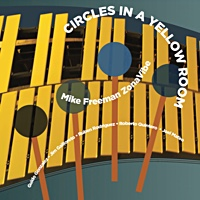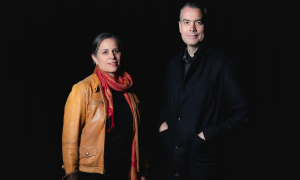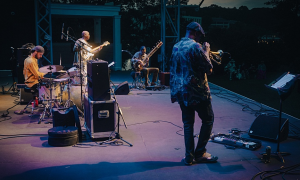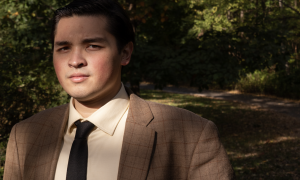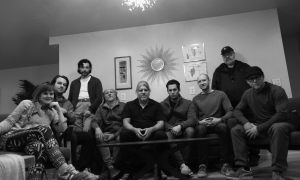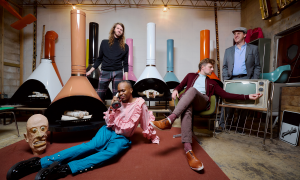Owners of iPhones know that their love for Steve Jobs's touch-screen marvel comes at a price. The iPhone's cellular coverage, provided exclusively by AT&T Wireless, is notoriously spotty. In some parts of New York and San Francisco, it's impossible to connect.
If you go for a dim sum lunch at Yank Sing restaurant on the edge of the financial district in San Francisco, you are likely to miss calls from the office. Some owners can't use their iPhones in their own homes. Even AT&T Park, the city's waterfront stadium, can be a dead zone.
The iPhone service is affected by several factors. First, AT&T's 3G network doesn't cover as much ground as Verizon, America's largest carrier. Second, urban areas packed with tall buildings are bad for wireless signals. Skyscrapers can block radio waves, or they can bounce them around to create what's called multipath interference, where signals from different directions collide and cancel each other out.
But the iPhone's worst enemy is the iPhone itself. So many Americans use them in the same places and at the same time that they are competing with one another for use of the network. “A hundred cellphones demanding bandwidth per cell site may not be out of the question in congested downtown areas," said Tim Pozar, a wireless engineer who installs custom repeater systems to improve cellphone coverage at offices in the San Francisco area. IPhone owners have proved to be heavy consumers of network capacity.
What to do? There is no single magic bullet to improve iPhone service. You can spend hours trying to persuade AT&T to let you out of your contract. The time you spend doing that will cost more than the contract termination fee.
Knowing a few tricks might get you a connection. If your touch screen says “No Service," the easiest fix is to hold the phone completely vertical, rather than slanted across your cheek. The iPhone's antenna is meant to reach furthest if it is held straight up and down. If that doesn't work, move. Indoors, walk to a window. Outdoors, cross the street.
For the newer 3G-capable iPhones, turning off the 3G in favor of AT&T's older Edge network is sometimes effective. Go to the iPhone's Settings icon. Tap General, then Network. Slide the Enable 3G toggle from On to Off. But you can't talk and browse the Web at the same time on Edge.
Another alternative is to use a Wi-Fi hot spot to make calls. Skype, the popular Internet phone service, will make and take calls as long as you leave the app running and signed in. (Until an iPhone can multitask, that means you have to have the Skype app on all the time.) Calls with other Skype users are free, but calls to and from phones cost about two cents a minute. The app is available in the iPhone App Store.
Skype call quality varied in our tests from clear to sputtery, with a delay from one half- second to three or four seconds. Also, the app works only over Wi-Fi, so you will need to juggle between Skype and AT&T, depending on where you are.
Or, for $15 a month, you can subscribe to the Line2 app that mimics Apple's phone in look and feel, but switches calls to a Wi-Fi network whenever the iPhone connects to one.
If you go for a dim sum lunch at Yank Sing restaurant on the edge of the financial district in San Francisco, you are likely to miss calls from the office. Some owners can't use their iPhones in their own homes. Even AT&T Park, the city's waterfront stadium, can be a dead zone.
The iPhone service is affected by several factors. First, AT&T's 3G network doesn't cover as much ground as Verizon, America's largest carrier. Second, urban areas packed with tall buildings are bad for wireless signals. Skyscrapers can block radio waves, or they can bounce them around to create what's called multipath interference, where signals from different directions collide and cancel each other out.
But the iPhone's worst enemy is the iPhone itself. So many Americans use them in the same places and at the same time that they are competing with one another for use of the network. “A hundred cellphones demanding bandwidth per cell site may not be out of the question in congested downtown areas," said Tim Pozar, a wireless engineer who installs custom repeater systems to improve cellphone coverage at offices in the San Francisco area. IPhone owners have proved to be heavy consumers of network capacity.
What to do? There is no single magic bullet to improve iPhone service. You can spend hours trying to persuade AT&T to let you out of your contract. The time you spend doing that will cost more than the contract termination fee.
Knowing a few tricks might get you a connection. If your touch screen says “No Service," the easiest fix is to hold the phone completely vertical, rather than slanted across your cheek. The iPhone's antenna is meant to reach furthest if it is held straight up and down. If that doesn't work, move. Indoors, walk to a window. Outdoors, cross the street.
For the newer 3G-capable iPhones, turning off the 3G in favor of AT&T's older Edge network is sometimes effective. Go to the iPhone's Settings icon. Tap General, then Network. Slide the Enable 3G toggle from On to Off. But you can't talk and browse the Web at the same time on Edge.
Another alternative is to use a Wi-Fi hot spot to make calls. Skype, the popular Internet phone service, will make and take calls as long as you leave the app running and signed in. (Until an iPhone can multitask, that means you have to have the Skype app on all the time.) Calls with other Skype users are free, but calls to and from phones cost about two cents a minute. The app is available in the iPhone App Store.
Skype call quality varied in our tests from clear to sputtery, with a delay from one half- second to three or four seconds. Also, the app works only over Wi-Fi, so you will need to juggle between Skype and AT&T, depending on where you are.
Or, for $15 a month, you can subscribe to the Line2 app that mimics Apple's phone in look and feel, but switches calls to a Wi-Fi network whenever the iPhone connects to one.


